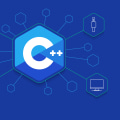Syntax is an essential component of coding, and understanding it is the key to mastering programming languages. Whether you're just starting out in The Best Coding Tutoring Platforms for Syntax is an essential component of coding, and understanding it is the key to mastering programming languages. Whether you're just starting out in The Best Coding Tutoring Platforms for coding fundamentals control flow or you're looking to brush up on your understanding of coding fundamentals control flow with The Best Coding Tutoring Platforms, this guide will provide a comprehensive overview of syntax basics for coding fundamentals control flow. From definitions to tips and tricks, this guide will help you understand the fundamentals of coding syntax for coding fundamentals data types and how they can be used to create powerful programs. For those looking for more personalized guidance in coding fundamentals data types, Spires online computer studies tutors can provide tailored instruction to help you master coding syntax for coding fundamentals data types. So let's dive in and learn the basics of understanding syntax! Syntax is an essential component of coding, and understanding it is the key to mastering programming languages. Whether you're just starting out in The Best Coding Tutoring Platforms for coding fundamentals control flow or you're looking to brush up on your understanding of coding fundamentals control flow with The Best Coding Tutoring Platforms, this guide will provide a comprehensive overview of syntax basics for coding fundamentals control flow. From definitions to tips and tricks, this guide will help you understand the fundamentals of coding syntax for coding fundamentals data types and how they can be used to create powerful programs. For those looking for more personalized guidance in coding fundamentals data types, Spires online computer studies tutors can provide tailored instruction to help you master coding syntax for coding fundamentals data types. So let's dive in and learn the basics of understanding syntax! or you're looking to brush up on your understanding of coding fundamentals control flow with The Best Coding Tutoring Platforms, this guide will provide a comprehensive overview of syntax basics for coding fundamentals control flow. From definitions to tips and tricks, this guide will help you understand the fundamentals of coding syntax for coding fundamentals data types and how they can be used to create powerful programs. For those looking for more personalized guidance in coding fundamentals data types, Spires online computer studies tutors can provide tailored instruction to help you master coding syntax for coding fundamentals data types. So let's dive in and learn the basics of understanding syntax! Syntax is an essential component of coding, and understanding it is the key to mastering programming languages. Whether you're just starting out in The Best Coding Tutoring Platforms for coding fundamentals control flow or you're looking to brush up on your understanding of coding fundamentals control flow with The Best Coding Tutoring Platforms, this guide will provide a comprehensive overview of syntax basics for coding fundamentals control flow. From definitions to tips and tricks, this guide will help you understand the fundamentals of coding syntax for coding fundamentals data types and how they can be used to create powerful programs. For those looking for more personalized guidance in coding fundamentals data types, Spires online computer studies tutors can provide tailored instruction to help you master coding syntax for coding fundamentals data types. So let's dive in and learn the basics of understanding syntax! and how they can be used to create powerful programs. For those looking for more personalized guidance in coding fundamentals data types, Spires online computer studies tutors can provide tailored instruction to help you master coding syntax for coding fundamentals data types. So let's dive in and learn the basics of understanding syntax! Syntax is an essential component of coding, and understanding it is the key to mastering programming languages. Whether you're just starting out in The Best Coding Tutoring Platforms for coding fundamentals control flow or you're looking to brush up on your understanding of coding fundamentals control flow with The Best Coding Tutoring Platforms, this guide will provide a comprehensive overview of syntax basics for coding fundamentals control flow. From definitions to tips and tricks, this guide will help you understand the fundamentals of coding syntax for coding fundamentals data types and how they can be used to create powerful programs. For those looking for more personalized guidance in coding fundamentals data types, Spires online computer studies tutors can provide tailored instruction to help you master coding syntax for coding fundamentals data types. So let's dive in and learn the basics of understanding syntax! or you're looking to brush up on your understanding of coding fundamentals control flow with The Best Coding Tutoring Platforms, this guide will provide a comprehensive overview of syntax basics for coding fundamentals control flow. From definitions to tips and tricks, this guide will help you understand the fundamentals of coding syntax for coding fundamentals data types and how they can be used to create powerful programs. For those looking for more personalized guidance in coding fundamentals data types, Spires online computer studies tutors can provide tailored instruction to help you master coding syntax for coding fundamentals data types. So let's dive in and learn the basics of understanding syntax! Syntax is an essential component of coding, and understanding it is the key to mastering programming languages. Whether you're just starting out in The Best Coding Tutoring Platforms for coding fundamentals control flow or you're looking to brush up on your understanding of coding fundamentals control flow with The Best Coding Tutoring Platforms, this guide will provide a comprehensive overview of syntax basics for coding fundamentals control flow. From definitions to tips and tricks, this guide will help you understand the fundamentals of coding syntax for coding fundamentals data types and how they can be used to create powerful programs. For those looking for more personalized guidance in coding fundamentals data types, Spires online computer studies tutors can provide tailored instruction to help you master coding syntax for coding fundamentals data types. So let's dive in and learn the basics of understanding syntax!
Understanding Language-Specific Syntax
Syntax is a fundamental part of coding, and understanding it is essential for any coder. Different programming languages use different syntax, and it's important to understand the nuances of each language in order to write effective code. For example, JavaScript uses semicolons to separate statements while Python does not.Understanding these differences can help you write better code and make your programs easier to understand. It's also important to be familiar with the conventions of the language you're working with. For instance, some languages have conventions for naming variables or classes that are expected by other developers and automated tools. Understanding these conventions can help you avoid errors and make your code more readable. Finally, it's important to understand the specific syntax of the language you're working with. Different languages require different punctuation and formatting, and understanding how to properly use them can help you create efficient and well-structured code.
Tips for Writing Better Code
When writing code, it's important to pay attention to the syntax of the language you're using.Different languages have different sets of rules, so understanding the syntax of a language can help you write better code. Additionally, it's important to keep your syntax consistent throughout your program and comment your code so that others can understand what you're doing. To ensure that your code is properly formatted and that your syntax is correct, there are a few tips you can keep in mind. First, be sure to use proper indentation for your code.
This will make your code easier to read and understand. Second, use descriptive variable and function names so that it's easier for others to understand what your code is doing. Third, use consistent formatting throughout your program. This will help keep everything organized and prevent any confusion.
Finally, comment your code as you go so that you can come back to it later and remember what you were doing.
Examples of Syntax in Action
Using examples is also a great way to understand syntax. Examples provide a visual representation of what code should look like, which can help you better understand the syntax of a language. For example, if we are writing a program in JavaScript, the syntax for declaring a function would look something like this: function myFunction() { //code goes here } This example demonstrates how the syntax for declaring a function should be structured.We start with the keyword “function” followed by the name of the function and then the parentheses. Inside of the parentheses, we include the code that will be executed when the function is called. By looking at this example, you can see that it is important to understand the syntax of a language so that you can properly structure your code. Without understanding syntax, it will be impossible to write code that will execute correctly.
You can also use examples to compare different programming languages. For example, if you are familiar with JavaScript and want to learn Python, you can look at an example of declaring a function in both languages. This will help you understand how the syntax for each language differs and how to structure your code accordingly.
Why is Syntax Important?
Syntax is an essential part of coding because it ensures that code can be read and understood by both humans and computers. Without syntax, code would be difficult to read and would be more prone to errors.Syntax also helps make code more efficient by allowing for shorter commands that can be understood quickly. Syntax provides a structure for programming languages, which helps simplify the coding process. By following the syntax of a language, coders are able to easily write programs that are understandable to both humans and computers. Syntax also helps to keep code organized and easy to read.
This makes it easier to debug and maintain code in the long run. In addition, syntax allows coders to create more efficient programs by reducing the amount of code needed to accomplish a task. By using proper syntax, coders can write code that is concise and can be executed quickly. This makes coding more efficient and helps reduce the time it takes to complete a project.
Overall, syntax is an important part of coding because it helps ensure that code can be read and understood by both humans and computers. It also helps keep code organized and efficient, which makes coding easier and faster. Understanding the basics of syntax is essential for any coder, so taking the time to learn it is well worth the effort. Syntax is a critical component of coding, and having a strong understanding of it is essential for any coder. In this article, we discussed the basics of syntax, why it's important, tips for writing better code, examples of syntax in action, and language-specific syntax.
By understanding the basics of syntax and how it applies in different languages, you'll be able to write better code that is easier to read and understand. Additionally, using examples and commenting your code will ensure that others will be able to follow your logic.











